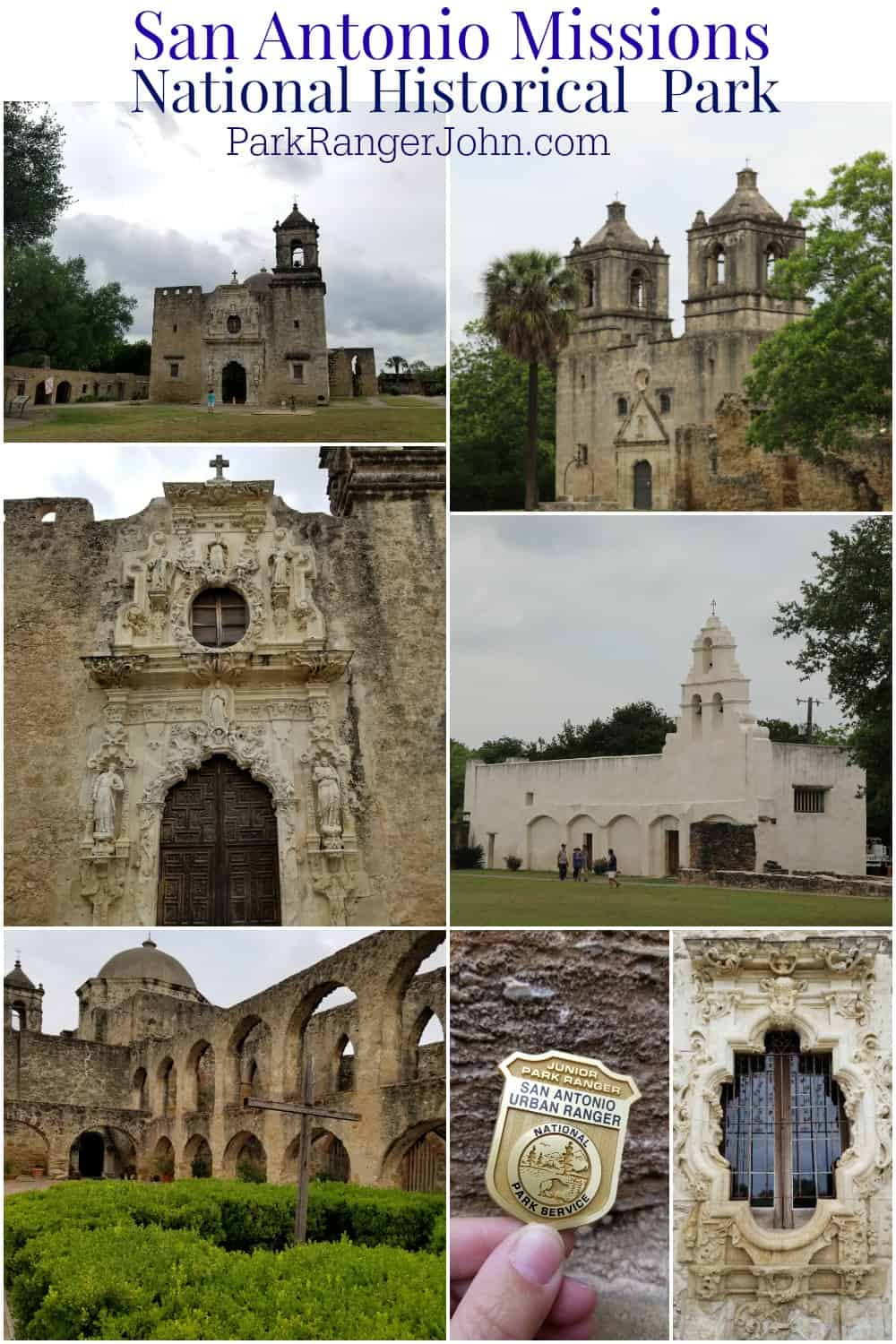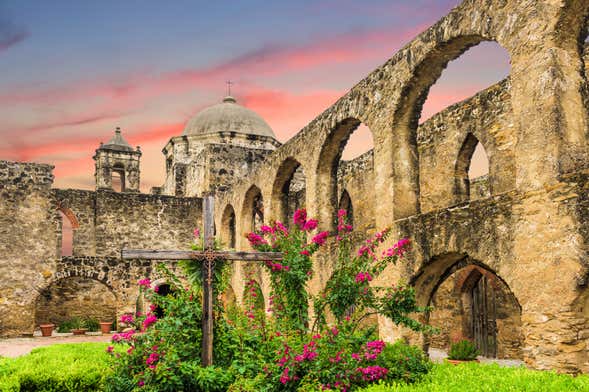San Antonio Missions National Historical Park Map: Navigate the Historic Sites
San Antonio Missions National Historical Park Map: Navigate the Historic Sites
Blog Article
Discover the Rich History of San Antonio Missions National Historical Park: a Comprehensive Guide to Its Cultural Importance and Conservation Initiatives
As we embark on a trip through the historical background of these missions, we discover architectural wonders that have held up against the examination of time. Past the mere physical structures, each objective, significantly Objective Espada, carries an extensive cultural weight that resonates deeply with those who discover its grounds.
Historic History of San Antonio Missions
The roots of the historic background of the San Antonio Missions run deep, intertwining Spanish early american influence with native cultures in the South Texas region. Established in the early 18th century, these missions were founded by Franciscan friars with the purpose of spreading out Christianity and converting the regional native populations. San Antonio Missions National Historical Park events. The Spanish Crown supported these missions as a way of solidifying control over the area and increasing their impact in the New World
The Spanish missionaries played a substantial role in forming the social landscape of the region, introducing new farming techniques, style, and spiritual practices. The aboriginal communities, such as the Coahuiltecans and various other people, interacted with the Spanish inhabitants, causing a mixing of customs and beliefs.
Over time, the objectives ended up being not just spiritual facilities however additionally financial and social centers, bring in inhabitants from numerous backgrounds. Today, the San Antonio Objectives stand as a testament to this complex history, showing the sustaining legacy of Spanish manifest destiny and the resilience of indigenous societies in South Texas.
Building Wonders of the Objectives
Having laid the foundation of cultural exchange between Spanish promoters and aboriginal communities, the architectural marvels of the San Antonio Missions exhibit a blend of European and aboriginal craftsmanship that continues to captivate site visitors. These missions, consisting of Objective San Jose, Objective Concepcion, Objective San Juan, Mission Espada, and the Alamo, showcase unique attributes such as ornate facades, complex carvings, vibrant frescoes, and strong rock wall surfaces. The Spanish Colonial style, identified by arched doorways, belfry, and large courtyards, mirrors a harmonious fusion of Spanish design components with aboriginal building techniques.
Each objective within the San Antonio Missions National Historical Park tells a special tale through its architecture, highlighting the advancement of building and construction designs and social impacts gradually. Site visitors can wonder at the knowledgeable craftsmanship apparent in the detailed stonework, hand-carved wooden doors, and spiritual iconography adorning the insides. These building work of arts stand as enduring testaments to the enduring heritage of the goals and the cultural heritage they represent.
Social Significance of Goal Espada
With its historic roots deeply intertwined with the native societies of the area, Goal Espada stands as a sign of cultural resilience and adaptation within the San Antonio Missions National Historical Park. Established in 1690, Goal Espada was established by Spanish Franciscans as a way to spread Christianity amongst the Coahuiltecan people while additionally acting as a center for agriculture and industry. The goal's cultural relevance hinges on its function as a conference point between Native and european American customs, leading to a distinct blend of architectural designs, religious practices, and farming methods.
Goal Espada's iconic aqueduct, referred to as "Acequia de Espada," is a testimony to the design skills of both Spanish and native individuals, showcasing their cooperation in creating crucial waterways for watering functions. This unified fusion of social influences is additional exemplified in the mission's elaborate makings, colorful frescoes, and spiritual events that continue to be exercised to today. As one of the oldest unrestored stone churches in America, Mission Espada stands as a living testament to the enduring heritage of cultural exchange and adaptation that defines the San Antonio Missions National Historic Park.
Conservation Efforts and Obstacles
Conservation in maintaining the historic integrity of Mission Espada experiences a myriad of complicated difficulties that demand innovative options and specialized stewardship. As one of the 5 goals within the San Antonio Missions National Historic Park, Mission Espada deals with conservation problems stemming from environmental aspects, city encroachment, and the recurring battle versus natural damage. The fragile balance between preserving the initial structures and guaranteeing visitor gain access to and safety and security requires precise planning and implementation.
Initiatives to preserve Mission Espada involve a multi-faceted method that includes site routine upkeep, architectural evaluations, and preservation projects. Partnerships between park authorities, chroniclers, archaeologists, and regional areas are vital in establishing lasting preservation strategies. Obstacles such as moneying restrictions, limited sources, and the requirement for specialized expertise better complicate conservation efforts.
Despite these obstacles, the dedication to safeguarding Mission Espada's historical importance continues to be steady. Via proceeded research, community interaction, and flexible conservation methods, the preservation of Goal Espada stands as a testimony to the dedication towards safeguarding our cultural heritage for future generations.
Community Engagement in Park Preservation

One of the primary methods the park involves the community is through volunteer possibilities. Local residents can participate in preservation tasks, curricula, and special events, enabling them to add straight to the preservation of the park. This hands-on participation not only profits the park in terms of extra sources and manpower however also develops a stronger link in between the area and the park itself.
Furthermore, the park frequently seeks input from regional stakeholders, consisting of neighborhood teams, businesses, and federal government companies, to guarantee that preservation efforts straighten with the requirements and worths of the surrounding area. By engaging with the local population in these significant means, San Antonio Missions National Historic Park promotes a culture of conservation and sustainability that will certainly assist protect this social treasure for future generations.
Final Thought

Beyond the plain physical structures, each mission, especially Goal Espada, brings an extensive cultural weight that resonates deeply with those that discover its grounds. These missions, consisting of Goal San Jose, Mission Concepcion, Objective San Juan, Objective Espada, and the Alamo, showcase distinctive features such as elaborate facades, detailed makings, vibrant frescoes, and durable rock walls.With its historic roots deeply linked with the indigenous cultures of the area, Mission Espada stands as an icon of cultural strength and adaptation within the San Antonio Missions National Historic Park (San Antonio Missions National Historical Park tours). As one of the oldest unrestored stone churches in America, Objective Espada stands as a living testimony to the enduring legacy of social exchange and adaptation that specifies the San Antonio Missions National Historic Park

Please visit one of our local supporters- Brownstone Law Appeal Lawyers San Antonio
Report this page